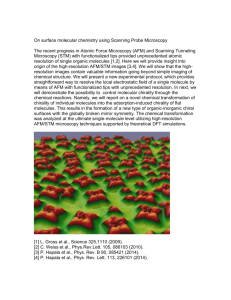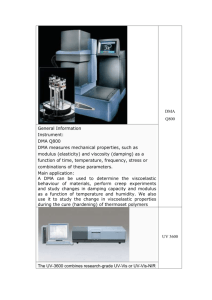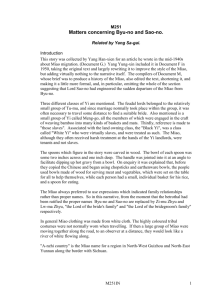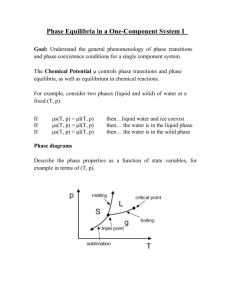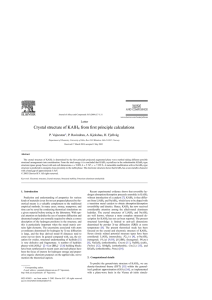Xue-Fei Miao
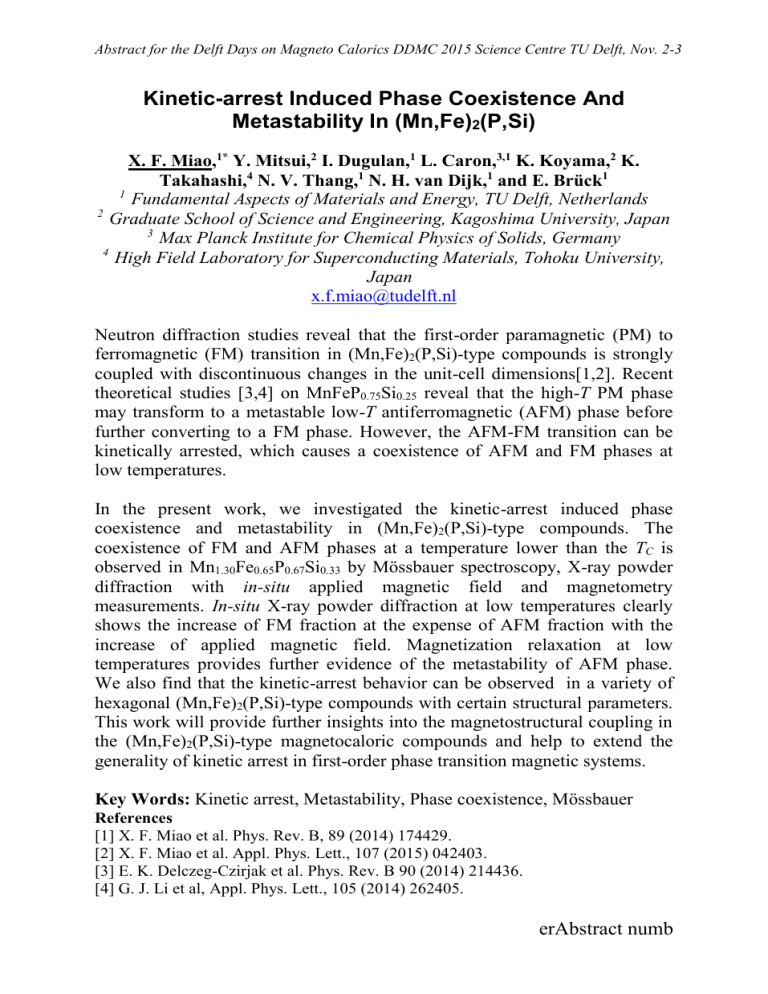
Abstract for the Delft Days on Magneto Calorics DDMC 2015 Science Centre TU Delft, Nov. 2-3
Kinetic-arrest Induced Phase Coexistence And
Metastability In (Mn,Fe)
2
(P,Si)
X. F. Miao, 1* Y. Mitsui, 2 I. Dugulan, 1 L. Caron, 3,1 K. Koyama, 2 K.
Takahashi, 4 N. V. Thang, 1 N. H. van Dijk, 1 and E. Brück 1
1 Fundamental Aspects of Materials and Energy, TU Delft, Netherlands
2 Graduate School of Science and Engineering, Kagoshima University, Japan
3 Max Planck Institute for Chemical Physics of Solids, Germany
4 High Field Laboratory for Superconducting Materials, Tohoku University,
Japan x.f.miao@tudelft.nl
Neutron diffraction studies reveal that the first-order paramagnetic (PM) to ferromagnetic (FM) transition in (Mn,Fe)
2
(P,Si)-type compounds is strongly coupled with discontinuous changes in the unit-cell dimensions[1,2]. Recent theoretical studies [3,4] on MnFeP
0.75
Si
0.25
reveal that the highT PM phase may transform to a metastable lowT antiferromagnetic (AFM) phase before further converting to a FM phase. However, the AFM-FM transition can be kinetically arrested, which causes a coexistence of AFM and FM phases at low temperatures.
In the present work, we investigated the kinetic-arrest induced phase coexistence and metastability in (Mn,Fe)
2
(P,Si)-type compounds. The coexistence of FM and AFM phases at a temperature lower than the T
C
is observed in Mn
1.30
Fe
0.65
P
0.67
Si
0.33
by Mössbauer spectroscopy, X-ray powder diffraction with in-situ applied magnetic field and magnetometry measurements. In-situ X-ray powder diffraction at low temperatures clearly shows the increase of FM fraction at the expense of AFM fraction with the increase of applied magnetic field. Magnetization relaxation at low temperatures provides further evidence of the metastability of AFM phase.
We also find that the kinetic-arrest behavior can be observed in a variety of hexagonal (Mn,Fe)
2
(P,Si)-type compounds with certain structural parameters.
This work will provide further insights into the magnetostructural coupling in the (Mn,Fe)
2
(P,Si)-type magnetocaloric compounds and help to extend the generality of kinetic arrest in first-order phase transition magnetic systems.
Key Words: Kinetic arrest, Metastability, Phase coexistence, Mössbauer
References
[1] X. F. Miao et al. Phys. Rev. B, 89 (2014) 174429.
[2] X. F. Miao et al. Appl. Phys. Lett., 107 (2015) 042403.
[3] E. K. Delczeg-Czirjak et al. Phys. Rev. B 90 (2014) 214436.
[4] G. J. Li et al, Appl. Phys. Lett., 105 (2014) 262405.
